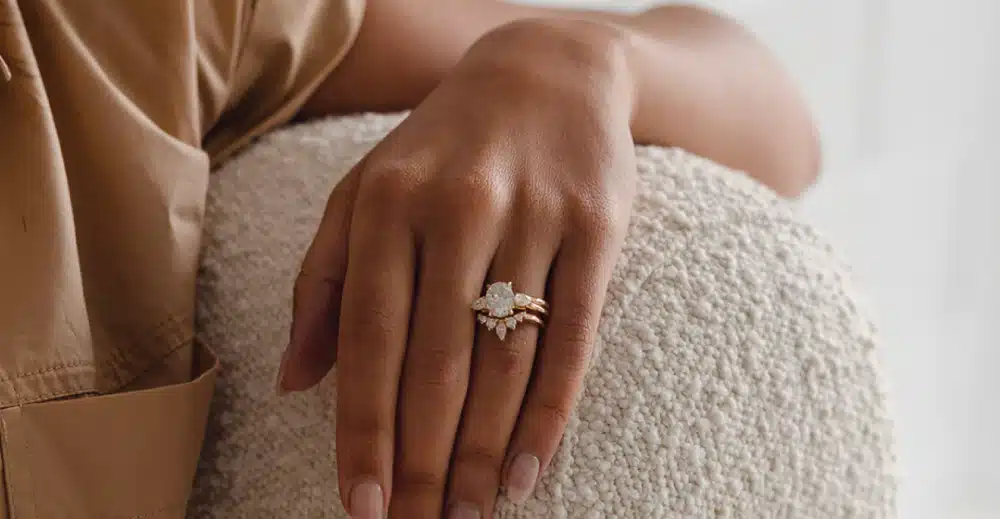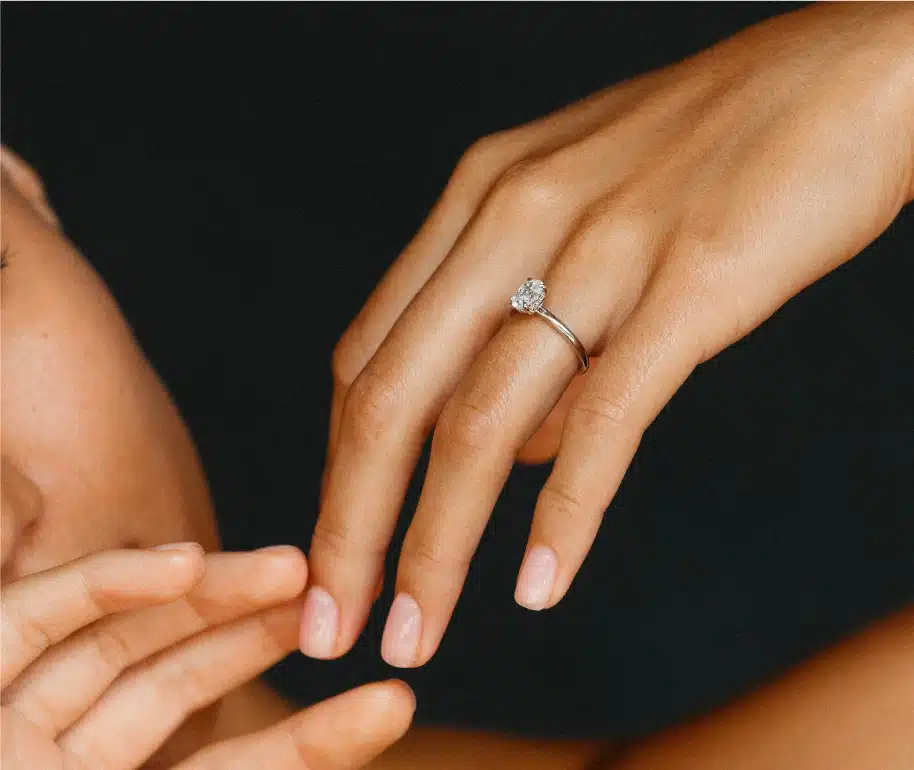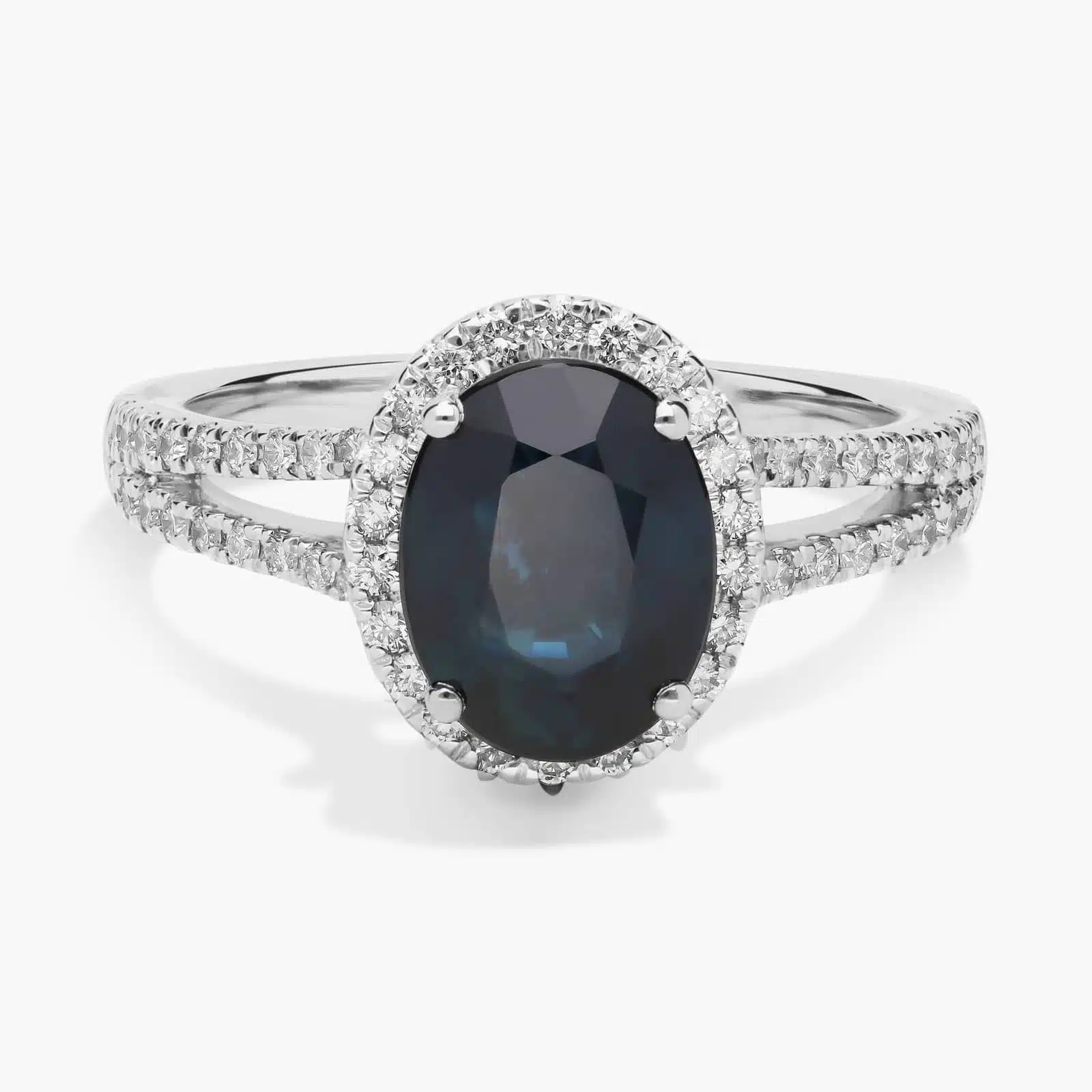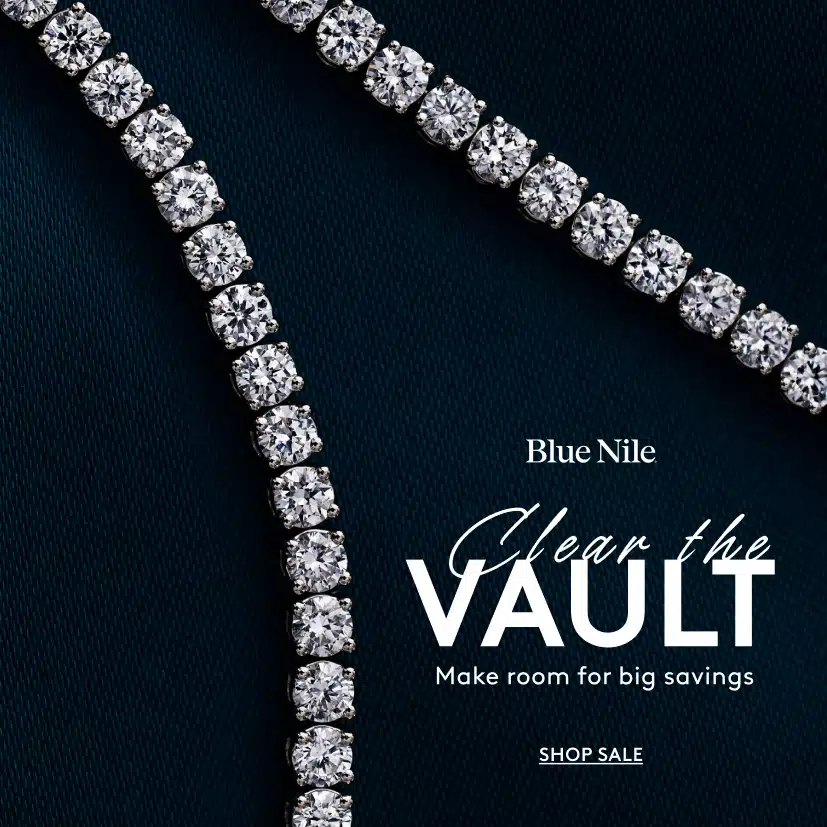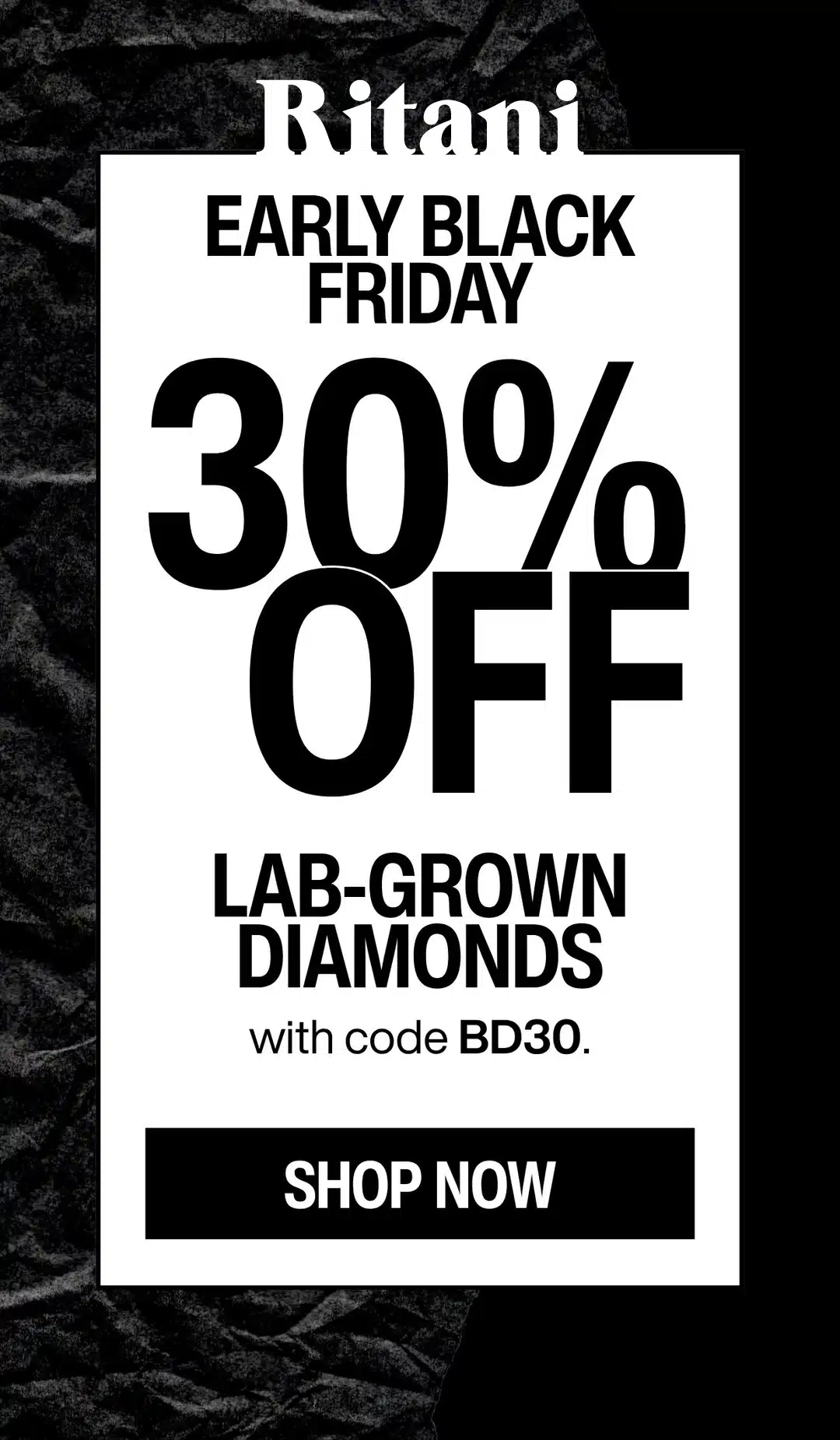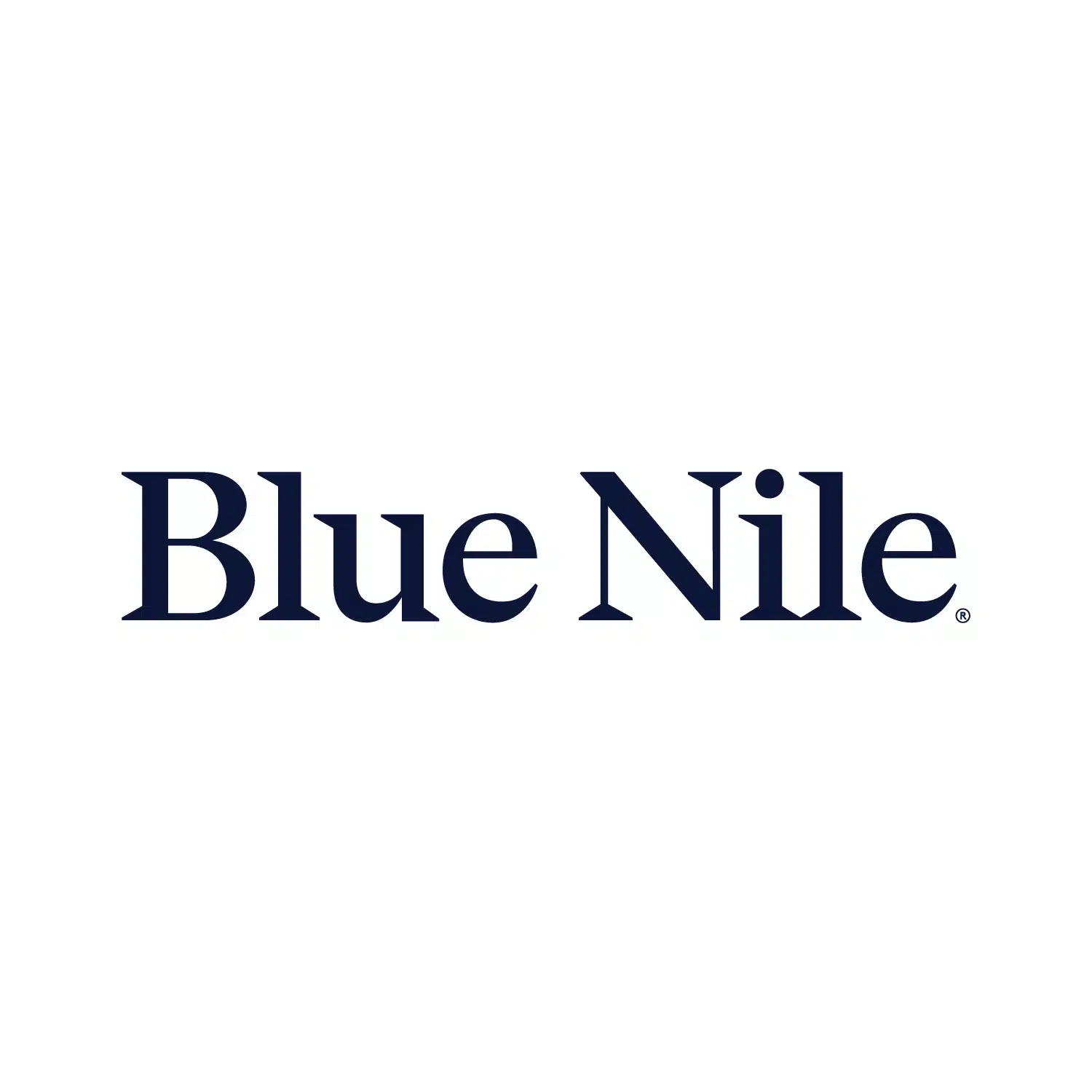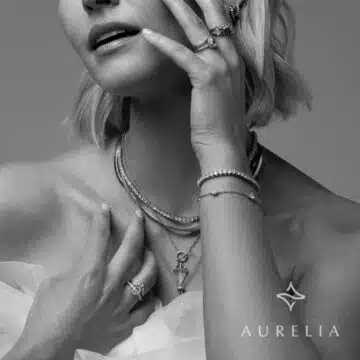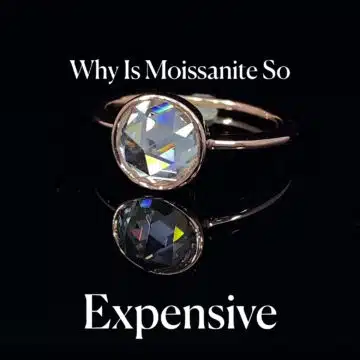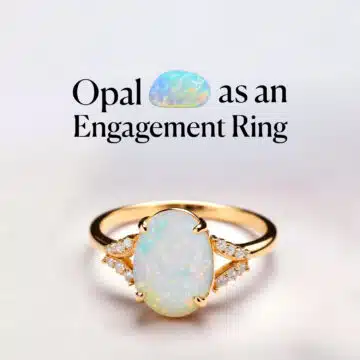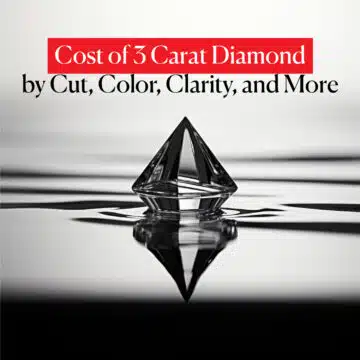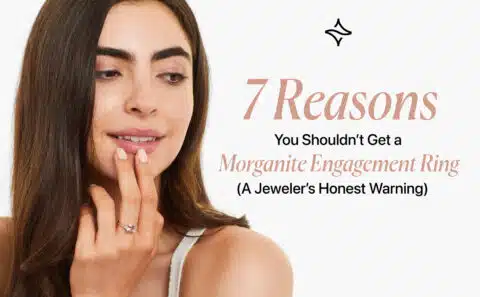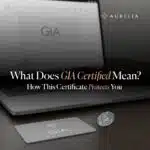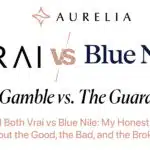The Gemological Institute of America (GIA) is replacing its detailed, specific grading reports for lab-grown diamonds with a new, simplified “Quality Assessment.” This controversial system removes the familiar 4Cs grading language, instead using broad terms like “Premium”—a new top tier where stones must have D color and at least VVS clarity—and “Standard,” creating a major shift for buyers.
You’ve likely just heard the news or seen the outrage online, and you’re trying to figure out what’s going on. One minute, GIA was the gold standard for all diamonds; the next, they’re changing the rules for lab-grown stones.
The big questions on everyone’s mind are: Why are they doing this, is this a sneaky way to devalue lab diamonds, and what does it mean for me, the person trying to buy one?
As your GIA-trained friend in the business, I’m here to cut through the noise. We’re going to break down exactly what is changing. Then, we will look at GIA’s official reasoning, compare it to what the market is actually saying, and I will give you my honest, unfiltered analysis of the situation.
Most importantly, I will give you a new, simple blueprint for how to confidently buy a lab-grown diamond in this new landscape.
Diamond IQ Test: Natural or Lab-Grown?
Two identical diamonds: GIA Certified, 1.51ct, D Color, VVS1, Ideal Cut. One is natural ($16,530), the other is lab-grown ($2,390). Choose the diamond you like better and see if you can match it to its origin.
A Side-by-Side Look at the Old vs. New GIA Report
To truly understand the weight of this announcement, you need to see exactly what has been taken away. For years, buyers have relied on the GIA’s detailed reports as a universal language of quality, a “diamond passport” that tells you a stone’s precise characteristics.

The new GIA Laboratory-Grown Diamond Quality Assessment fundamentally changes that language, replacing precision with broad categories.
Let’s break down the three most critical components—Color, Clarity, and Cut—to see what this change really looks like.
| Feature | The “Old” GIA Report (Until Sept 30) | The “New” GIA Assessment (From Oct 1) |
| Color Grade | Specific Grade (D, E, F, etc.) | Falls into a “Premium” or “Standard” category. |
| Clarity Grade | Specific Grade (VVS1, VS2, etc.) | Falls into a “Premium” or “Standard” category. |
| Cut Grade | Specific Grade (Excellent, VG, etc.) | Still uses a specific grade within the categories. |
Now, let’s go deeper than just a simple table. As your friend in the business, I want to explain the real-world impact of what you’re losing in each of these critical areas.
The New Reality of Color Grades
Under the old system, the GIA certificate provided a specific letter grade for color on their industry-standard D-to-Z scale. This was incredibly important because it allowed you, the buyer, to make savvy financial trade-offs.
You could see that a G color lab-grown diamond, which looks identical to a D color to the naked eye, might cost 20% less. You had the specific data to hunt for value.
Under the new system, that specificity is gone. Your diamond’s color grade will no longer be listed as a precise “E” or “H.” Instead, it will simply be bucketed into one of two vague categories. This removes your ability to be a smart shopper.
Imagine trying to compare two different cars, and the only information you have is that they are both in the category of “Fast.” Is one a Ferrari and one a Mustang? You have no idea. That is the new reality for GIA color grades on lab diamonds.
The New Reality of Clarity Grades
The same fundamental problem now applies to clarity. The old reports used GIA’s detailed, 11-point clarity scale, from Flawless down to Included. This allowed buyers to master the concept of “eye-clean” and find the ultimate value.
A smart buyer knew that finding an SI1 clarity stone where the inclusion was a tiny, transparent crystal near the edge was the secret to saving thousands of dollars, because it looked identical to a VVS diamond that cost 40% more.
With the new “Premium” and “Standard” categories, that entire strategy is obliterated. The new report hides the very details that create value. You can no longer tell if a “Standard” grade diamond is a nearly flawless VVS1 or a much more common VS2.
The price difference between those two stones is enormous, but on the new GIA assessment, they will look exactly the same. It takes power away from you, the consumer, and obscures the very information you need to make an informed financial decision.
The New Reality of Cut Grades
To be fair, this is the one area where GIA is retaining some level of detail. The new assessment will still provide a specific Cut grade, such as “Excellent” or “Very Good.” However, this grade is now nested inside the broader quality tiers.
This means you can have a “Premium” diamond with an Excellent cut and a “Standard” diamond with an Excellent cut. While the specific data is still there, it’s been demoted, secondary to the new, less informative categories.
As GIA’s CEO Pritesh Patel explained in the official announcement, the institute believes that “Using descriptive terms for the quality of laboratory-grown diamonds is appropriate, as most fall into a very narrow range of color and clarity.”
From my expert perspective, I respectfully but firmly disagree. While it is true that a high percentage of lab-grown diamonds are of excellent quality (often in that D-G Color, VS+ Clarity range), that is precisely why the subtle differences matter so much.
It is within that “narrow range” that all the smart buying decisions are made. Is it an E color or a G color? A VVS2 or a VS2? These are not minor details; they are multi-thousand-dollar details, and this change removes that critical information from the GIA certificate.
What Are the New “Premium” and “Standard” Tiers?
So, let’s break down the new rulebook. To receive a GIA Laboratory-Grown Diamond Quality Assessment, a synthetic diamond must meet the criteria for at least the “Standard” tier. Here is exactly what those new terms mean:
| The New Tiers | Color & Clarity Requirements | Cut, Polish & Symmetry |
| Premium | Must be D Color & VVS Clarity or better. | All must be “Excellent.” |
| Standard | E to J Color & VS Clarity or better. | “Very Good” or better. |
| Below Standard | Anything below a J-Color or VS-Clarity | No Report Issued. The stone is returned. |
The “Premium” Tier: The Top of the Top
This new “Premium” category is for the absolute pinnacle of lab-grown diamonds. To qualify, a diamond must be perfect in every major category:
- Color: Must be D Color. The highest possible grade, completely colorless. An “E” color will not qualify.
- Clarity: Must be VVS Clarity or better. This includes VVS2, VVS1, Internally Flawless (IF), and Flawless (FL).
- Cut, Polish, and Symmetry: All three of these grades must be Excellent.
My Analysis: This tier is for the collector’s grade of lab diamonds. It represents the top 1% of the top 1%. While it is a clearly defined category, it still hides value.
For example, there can be a 15-20% price difference between a VVS2 and a Flawless stone, but under this new system, they will both simply be called “Premium.”
The “Standard” Tier: The Massive, Confusing Middle Ground
This is, without a doubt, the most controversial and problematic part of the new system. The “Standard” category is where the vast majority—likely over 95%—of the lab-grown diamonds people actually buy will fall.
- Color: A massive range, from a near-perfect E color all the way down to a J color, which shows a noticeable hint of warmth.
- Clarity: A huge range, from a nearly flawless VVS1 down to a VS2, which has small but visible inclusions under magnification.
- Cut, Polish, and Symmetry: A wide range from “Very Good” up to “Excellent.”
My Analysis: This category is so broad it borders on being unhelpful. Under this new rulebook, a spectacular E-VVS1 lab diamond with a triple-excellent cut will receive the exact same “Standard” quality assessment as a J-VS2 diamond with a “Very Good” cut.
These two diamonds are worlds apart in terms of both beauty and market value—the E-VVS1 could easily be worth double the price of the J-VS2. But on the new GIA assessment, they will appear to be equals.
This is the central issue that has so many buyers concerned; it makes an apples-to-apples comparison of two “Standard” diamonds virtually impossible.
The “Below Standard” Rejection
Perhaps one of the most revealing parts of this new system is what gets left out. If a lab-grown diamond has a color grade below J or a clarity grade below VS (for example, the incredibly popular and high-value SI1 clarity grade), it will not receive a quality assessment at all. The stone will simply be returned to the sender with a note that it did not meet the criteria.
My Analysis: This decision is a powerful statement. It effectively means that GIA will no longer certify the huge number of beautiful, “eye-clean” SI1 lab diamonds that have become the secret of savvy buyers everywhere.
By refusing to even issue a report for them, it creates a subtle but powerful perception that these stones are not worthy of grading, which is a major blow to consumer choice and value.
Best Deal Of The Year – Final Days
Blue Nile’s “Clear The Vault” is ON.
Shop Fine Jewelry Upto 70% OFF.
*Exclusions may apply. See Blue Nile for complete details.
What the Industry Insiders and Savvy Buyers are Saying
GIA’s official reason for this change is to simplify the grading process for lab-grown diamonds. But when I listen to the market—the real people who buy, sell, and analyze these stones every single day—I hear a very different story. The reaction to this announcement has been swift, skeptical, and overwhelmingly negative.
To give you the full picture, we’re going to look at the three major concerns that are being echoed across forums, social media, and in my own private conversations with industry colleagues.
Concern #1: An Attempt to Protect the Natural Diamond Industry
This is, by far, the most widespread and deeply felt theory. The overwhelming sentiment is that this move is not about simplification, but about a deliberate attempt to create a class distinction and devalue lab-grown diamonds in the mind of the consumer.
It’s seen as a defensive move by an establishment trying to protect the traditional, and far more profitable, natural diamond market.
Real buyers have not been shy about voicing this suspicion. As one commenter, @RedRican, put it with blunt clarity:
GIA has partnered with DeBeers and they’re trying to devalue the value of Lab diamonds. I have both, love both. I will still gravitate towards lab diamonds. I think GIA is not acting in the best interest of the consumer, they’re supposed to be nonprofit too!
This idea is not a fringe conspiracy theory; it is the immediate and primary conclusion that many in the market have drawn. Another buyer, @SpoiledLocGurl, echoed this, saying it “Sounds like a bunch of b.s to try and save the natural diamond industry. All about money.”
My Analysis: From an insider’s perspective, it’s easy to see why people believe this. By removing the specific D-to-Z color and FL-to-I2 clarity grades, GIA is creating a fundamental information gap.
This allows a traditional jeweler to say to a customer, “Well, you can buy this G-VS1 natural diamond with a full, detailed GIA report, or you can buy this lab-grown one that just has a vague ‘Standard’ grade. As you can see, they aren’t graded to the same standard.”
It intentionally creates a sense of doubt and ambiguity around the lab-grown product, which could be a powerful tool to steer undecided buyers back towards the higher-priced natural stones.
DIAMOND ON SALE!!
⏰ Tick-Tock! The Best Diamond Deals at James Allen Are Disappearing Fast!
Concern #2: The Removal of Critical Buying Data
The second major point of outrage comes from savvy, well-researched buyers who feel that GIA is taking away the very tools they need to make an informed decision and find the best value. This is especially true for the online market, where the details on the certificate are all a buyer has to go on.
This frustration was perfectly captured by user @Lindsayyyay in a widely-liked comment:
This is just going to cut into Gia’s market share for lab-grown Diamond reports. Why would anyone want to pay more for a Gia report when it doesn’t contain any of the information that they want to know about a lab diamond?
Another stat-loving buyer, @Elaine_Parhamovich, highlighted the practical problem for those of us who shop online:
I’m a stat geek. I want all the information that one sees in a graded diamond/lab diamond certificate. My only option for buying jewelry these days is online. When the seller provides the details of a stone, it helps in my decision to buy or to pass on it.
My Analysis: This is, for me, the most damaging aspect of GIA’s decision. It hurts the very people who do their homework. The entire concept of “value shopping” for a diamond is built on understanding the subtle but important differences between grades.
For example, knowing you can get an eye-clean SI1 for 40% less than a VVS2 is a core strategy. This new system makes that impossible.
Furthermore, it creates a massive headache for insurance. As another user, @TFMuhamet, wisely pointed out, how can you get a proper valuation for insurance with a report that just says “Standard”?
An insurance company needs to know if they are replacing a G-VVS2 or a J-VS1; the price difference is thousands of dollars. By removing this data, GIA is not just simplifying; they are erasing critical financial information.
Read Our 5-Star Blue Nile Review
Check our comprehensive Blue Nile review to learn why we rated Blue Nile 5 stars for their exceptional quality and value.
Concern #3: The Market Will Simply Move On (And Shift to IGI)
The final and perhaps most logical conclusion many have come to is that GIA has made a massive strategic blunder that will not kill the lab-grown market, but will simply kill their own relevance within it.
The market needs detailed reports, and if GIA will no longer provide them, the business will simply go to the lab that does: the IGI.
This sentiment was clear from many buyers, like @wmr4463, who stated:
It seems like the industry wants to low key convince people that lab grown diamonds are lesser quality than natural diamonds. I don’t agree with that and I hope people shift preference from GIA to IGI.
This isn’t just wishful thinking from consumers; it’s a reality that many in the trade have already recognized. In one of the most insightful comments, a user named @retep590, who identified themselves as being “from the trade,” laid out the situation perfectly:
GIA is not the industry standard in the certification of lab grown diamonds. GIA remains the benchmark for natural diamonds. IGI has become the norm for lab grown diamonds globally… What GIA is doing… is a sign of desperation to turn back time, because they are largely out of that game.
My Analysis: This, in my professional opinion, is the ultimate consequence of GIA’s decision. For the last several years, the International Gemological Institute (IGI) has been the dominant and most trusted name for lab-grown diamond reports.
James Allen: Our 5-Star Choice for Price and Selection
Check our comprehensive James Allen Review to learn more about their pricing and commitment.
They embraced the product early and provided the detailed, reliable certificates that the market demanded. GIA was very late to the party. This new move feels less like a power play to hurt the lab market and more like GIA admitting defeat and effectively abdicating its position.
They have chosen to focus solely on the natural diamond market and are essentially handing the entire lab-grown certification industry to IGI on a silver platter. The market abhors a vacuum, and IGI is perfectly positioned to fill it.
The 3 Key Consequences of GIA’s New System
Okay, we’ve seen the official announcement, and we’ve heard the outrage from the market. But let’s get down to brass tacks. What does this decision actually mean for you when you go to buy a lab-grown diamond tomorrow?
When you cut through all the noise, this move by the GIA has three very clear, and very significant, consequences for you, the buyer.

1. The Information Gap: The End of Smart Shopping
The most immediate and damaging consequence of this new system is the “information gap” it creates. The entire strategy of smart diamond buying is built on your ability to compare stones based on their specific qualities and find the best value. This new GIA assessment actively prevents you from doing that.
Here’s a real-world example: Under the new system, a jeweler can show you two GIA-assessed lab diamonds. Both have a “Standard” grade.
- Diamond A is an E-Color, VVS1-Clarity stone with a Triple Excellent Cut.
- Diamond B is a J-Color, VS2-Clarity stone with a Very Good Cut.
The price difference between these two diamonds should be enormous—Diamond A could easily be worth 50% or more than Diamond B. But on their GIA paperwork, they will look exactly the same. The new report hides the very details that determine a diamond’s beauty and its price.
As I’ve explained in our deep dive on finding the ultimate value in SI1 Clarity Diamonds, it’s the specifics that allow a savvy buyer to win. By removing those specifics, GIA is effectively ending the practice of value-hunting for any lab diamond that bears their name.
2. The Insurance Problem: A Nightmare for Your Broker
This is the practical, real-world headache that follows from the information gap. As the buyer @TFMuhamet wisely pointed out in the comments, without a detailed report, getting a proper valuation for insurance becomes incredibly difficult.
When you get an engagement ring insured, the company needs to know its precise “replacement value.” An appraiser and an insurance underwriter cannot work with vague terms like “Premium” or “Standard.” They need to know the exact specifications of the stone they are insuring. Are they insuring a D-VVS1, or a G-VS1?
If you lose your ring, the insurer won’t know whether to give you the money to replace it with a top-tier stone or a mid-tier one. That difference represents thousands of dollars of financial protection that you, the owner, are at risk of losing.
Understanding this is a key part of our guide on the definition of an appraisal for a diamond ring, and this new GIA system creates a massive problem.
3. The Abdication: GIA is Handing the Crown to IGI
This, in my professional opinion, is the ultimate market consequence of this decision. The market needs specific, reliable data to function.
By creating an information vacuum for lab-grown diamonds, GIA isn’t going to stop people from buying them; they are simply going to stop people from using GIA to certify them.
GIA has effectively chosen to focus all its brand equity on the natural diamond market and has walked away from the lab-grown category. They have ceded the field to their biggest competitor. And that leads us to the solution.
Your New Best Friend: Understanding the IGI Report
So, if GIA has walked away from providing the detailed reports that savvy lab-diamond buyers demand, who do you trust now? The answer is simple, and it’s the lab that has been the established leader and gold standard in this space all along: the IGI (International Gemological Institute).
| GIA’s “New” Lab Assessment | IGI’s Lab-Grown Report | The Mehedi Verdict |
| Broad “Premium” / “Standard” tiers. Lacks specific color & clarity grades. Obscures true value and makes comparisons impossible. | Provides specific, detailed grades for Color, Clarity, Cut, Polish, and Symmetry, just like the old GIA reports. Includes a detailed clarity plot map. | For lab-grown diamonds, the IGI certificate is now the superior choice. It provides the specific, detailed data you need to be an informed buyer, find the best value, and get your diamond insured properly. |
The bottom line is this: The rules have changed, and now we change with them. The GIA certificate is, and remains, the undisputed gold standard for natural, mined diamonds. But with this new move, the IGI certificate has become the clear and undeniable gold standard for lab-grown diamonds.
This new, bifurcated reality is a foundational principle of our updated Diamond Buying Guide.
My 3 Simple Rules for the Post-GIA World
Alright, we’ve gone deep into the “why” and the “what’s next,” but I want to boil all of this down to a simple, actionable blueprint. A lot has changed, but the path forward is actually clearer than ever.
As your friend in the business, I am giving you my three new, non-negotiable rules for buying a diamond with absolute confidence in this new landscape. This is your new master plan.
1. For Lab-Grown Diamonds, Prioritize IGI Certificates
This is the new golden rule. As of today, the International Gemological Institute (IGI) is the undisputed gold standard for lab-grown diamond reports.
For years, IGI has been the leader and innovator in this space, and they are now the only major lab that consistently provides the specific, detailed, and reliable 4Cs grading information you need to make an informed decision on a lab-grown diamond.
Their reports include a specific letter grade for Color (like “G”), a specific grade for Clarity (like “VS1”), and a full, detailed breakdown of Cut, Polish, and Symmetry. When you are buying a lab-grown diamond, an IGI certificate is now your non-negotiable guarantee of transparency and quality.
2. For Natural Diamonds, GIA is Still the Undisputed King
It is absolutely crucial to understand that this change only affects lab-grown diamond reports. This does not, in any way, change the fact that GIA’s world-class grading for natural, mined diamonds is the ultimate benchmark of the entire industry.
If you are buying a natural diamond, a GIA certificate remains the single most important document you can have. It is your non-negotiable guarantee of the stone’s quality, characteristics, and value. This is a point I will never waver on.
This new policy has simply created a clear divide in the market: GIA is now the lab for naturals, and IGI is the lab for lab-grown. Our guide to GIA Certified Synthetic Diamonds explores the long and sometimes complex history GIA has had with grading created stones.
3. Always, Always, Always Buy with Your Eyes
This is the rule that will never, ever change, no matter what happens with the paperwork. The certificate, whether it’s from GIA or IGI, is the diamond’s resume. It tells you the stone’s on-paper qualifications and helps you verify its value. But the 360-degree, high-definition video is the diamond’s job interview, and it’s where you see its real personality.
The certificate can’t tell you if a VS2 inclusion is a dark crystal in the center or a transparent feather at the edge. It can’t tell you if an “Excellent” cut stone has a brilliant, fiery sparkle or a more subtle glow. The video tells you everything.
You must use the high-quality video technology from trusted retailers like James Allen and Blue Nile to visually inspect any diamond before you buy. Trust your eyes to be the final judge.
Your Top Questions, Answered
You’ve got the new blueprint, but I know this situation creates a lot of specific questions. Here are my direct, no-nonsense answers to the most common queries I’m hearing from savvy buyers like you.
The Verdict: A New Landscape, Not the End of Lab Diamonds
This controversial move from GIA is a seismic shift in the industry. While it has created a lot of confusion, the practical result for you, the savvy buyer, is actually quite simple: the market is now bifurcated. GIA is for naturals, IGI is for labs.
Lab-grown diamonds are not going anywhere. They are still a fantastic, beautiful, and high-value choice. The only thing that has changed is the paperwork.
By understanding this new landscape and making an IGI certificate your standard for lab-grown stones, you can continue to shop with the same confidence and savvy as before. You now have the inside track—don’t let the confusion stop you from getting the diamond you love.
James Allen is a top leader in online diamond sales, offering cutting-edge imaging technology that lets you inspect diamonds as if you were using a jeweler's loupe. With the largest exclusive selection of loose diamonds available online and excellent pricing, they also boast one of the finest collections of lab-created diamonds on the market. They currently run a 25% discount on selected lab-grown diamonds!
WHAT WE LOVE ABOUT THEM:
- 30-day no-questions-asked return policy, with a prepaid shipping label provided by James Allen.
- Lifetime warranty on all purchases.
- Free international shipping.
- Complimentary prong tightening, repolishing, rhodium plating, and cleaning every six months.
- Insurance appraisals included with purchases.
- One free resizing within 60 days of purchase.
- Free ring inscriptions available.
- Best-in-class high-quality imagery for every diamond in stock.
- 24/7 customer support.
- Premium, best-in-class packaging.
Blue Nile is one of the biggest and most recognized online jewelry retailers, offering an extensive and exclusive inventory. Their high-resolution images are improving and getting closer to the quality offered by James Allen, while their prices remain highly competitive. Right now, Blue Nile offers up to 30% savings on jewelry during a limited-time sale.
WHAT WE LOVE ABOUT THEM:
- 30-day no-questions-asked return policy, with a prepaid shipping label provided by Blue Nile.
- Lifetime warranty on all purchases.
- Free shipping on every order.
- Complimentary services every six months, including prong tightening, repolishing, rhodium plating, and cleaning.
- Insurance appraisal included with your purchase.
- One free resizing within the first year.
- High-quality images available for roughly half of their diamond selection.
- 24/7 customer service support.
- Full credit toward future upgrades, as long as the new item is at least double the value.
- Best-in-class order fulfillment process.
Continue Your Research Journey
You’ve now mastered one of the most sophisticated diamond shapes and have the expert knowledge to choose a truly spectacular one. If you’re ready to take the next step in your buying process, these hand-picked guides will help you dive even deeper.
The In-Depth Retailer Reviews
- Our #1 Recommended Retailer: The Ultimate James Allen Review – (https://moissanitebyaurelia.com/james-allen-review/)
- The Industry Heavyweight: The Complete Blue Nile Review for 2024 – (https://moissanitebyaurelia.com/blue-nile-reviews-2024/)
- Another Head-to-Head Battle: Brilliant Earth vs. James Allen Compared – (https://moissanitebyaurelia.com/brilliant-earth-vs-james-allen/)
- A Broader Look at the Market: The Best Places to Buy Premium Jewelry – (https://moissanitebyaurelia.com/best-places-to-buy-premium-jewelry/)
Advanced Diamond Knowledge & Vendor-Specific Cuts
- Go Deeper on Premium Cuts: Astor vs. True Hearts: A Battle of Premium Cuts – (https://moissanitebyaurelia.com/astor-vs-true-hearts/)
- A Deep-Dive on Blue Nile’s Best: Is the Astor Cut Worth It? – (https://moissanitebyaurelia.com/astor-by-blue-nile-cut-worth-it/)
- A Look at James Allen’s Signature Diamonds: An Unbiased James Allen True Hearts Review – (https://moissanitebyaurelia.com/james-allen-true-hearts-review/)
Advanced Diamond Knowledge
- A Complete Overview: The Diamond Color and Clarity Chart Explained – (https://moissanitebyaurelia.com/diamond-color-and-clarity-chart/)
- The Foundation: Our No-Nonsense Diamond Grading Chart (The 4 Cs) – (https://moissanitebyaurelia.com/diamond-grading-chart-4-cs-of-diamonds/)
- Mastering the Sweet Spot: A Full Breakdown of VS1 vs. VS2 Diamond Clarity – (https://moissanitebyaurelia.com/vs1-vs-vs2-diamond/)
- The Full Story on Synthetics: An Expert Guide to the Types of Lab-Grown Diamonds – (https://moissanitebyaurelia.com/types-of-lab-grown-diamonds/)
- A Deep-Dive on Clarity: What is the Best Diamond Clarity? – (https://moissanitebyaurelia.com/what-is-the-best-diamond-clarity/)
- Understanding the Other Top-Tier Lab: A Guide to the AGS Grading System – (https://moissanitebyaurelia.com/ags-grading-system/)
- An Expert Guide to Value: H Color Diamond Pricing Tips for Buyers – (https://moissanitebyaurelia.com/h-color-diamond-pricing-tips-for-buyers/)
Practical Guides & Strategies
- See How it Stacks Up: A Guide to the Princess Cut Diamond Ring – (https://moissanitebyaurelia.com/princess-cut-diamond-ring-guide/)
- Considering a Lab Diamond?: A Guide to the Types of Lab-Grown Diamonds – (https://moissanitebyaurelia.com/types-of-lab-grown-diamonds/)
- A Look at a Key Detail: What is a Diamond’s Culet? – (https://moissanitebyaurelia.com/what-is-a-diamonds-culet/)
- Understanding Value After the Purchase: The Definition of an Appraisal for a Diamond Ring – (https://moissanitebyaurelia.com/definition-of-appraisal-for-diamond-ring/)


